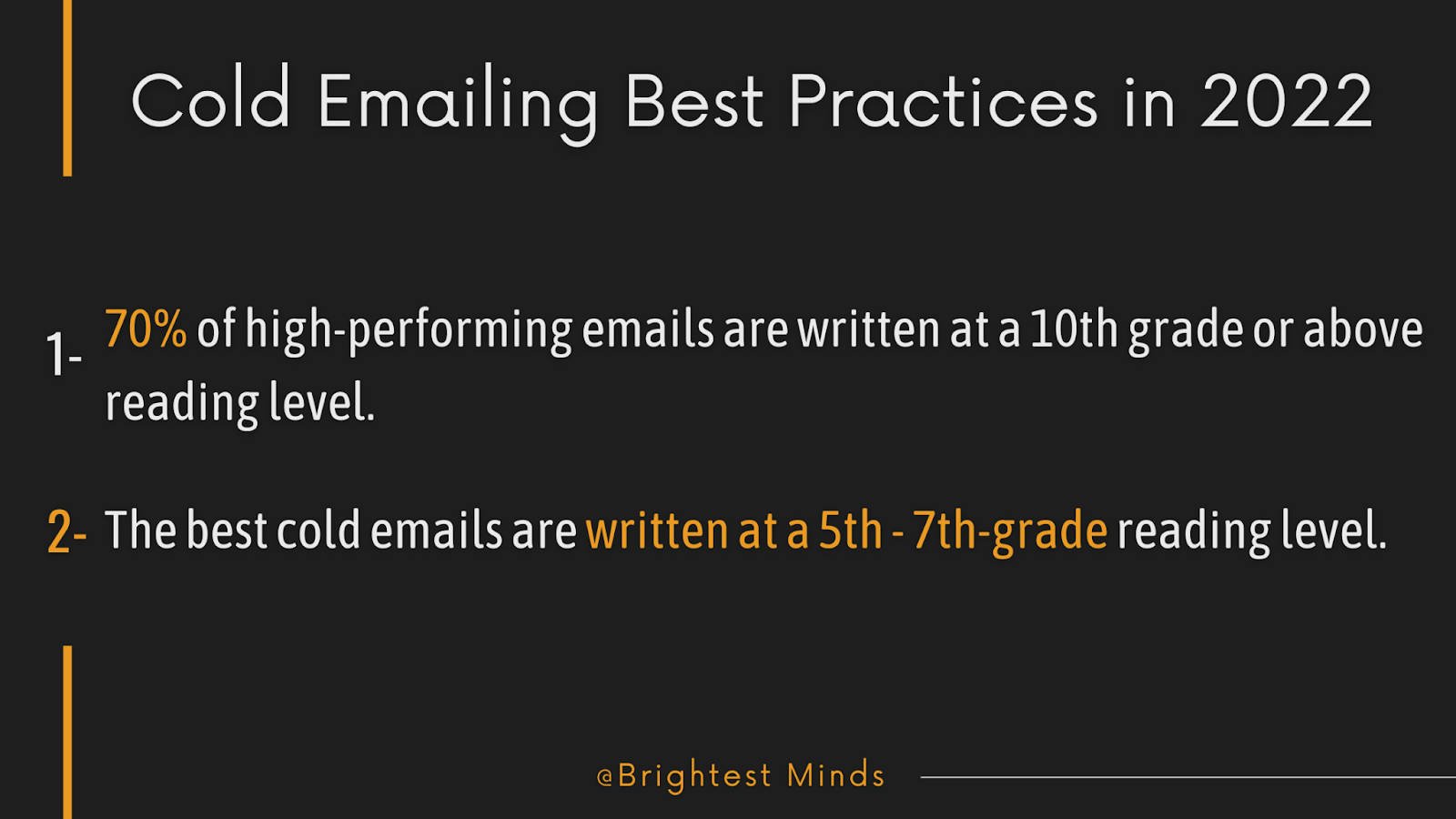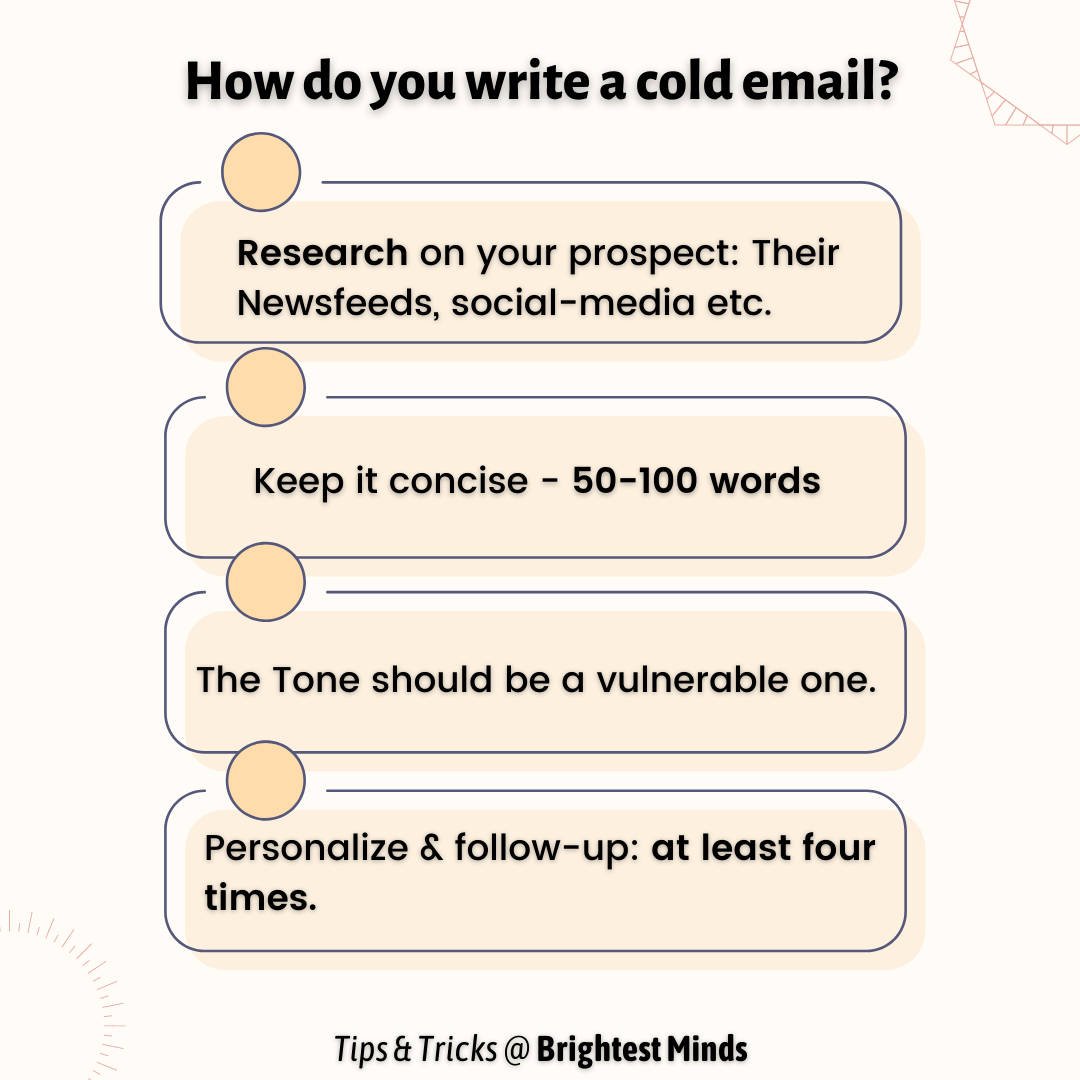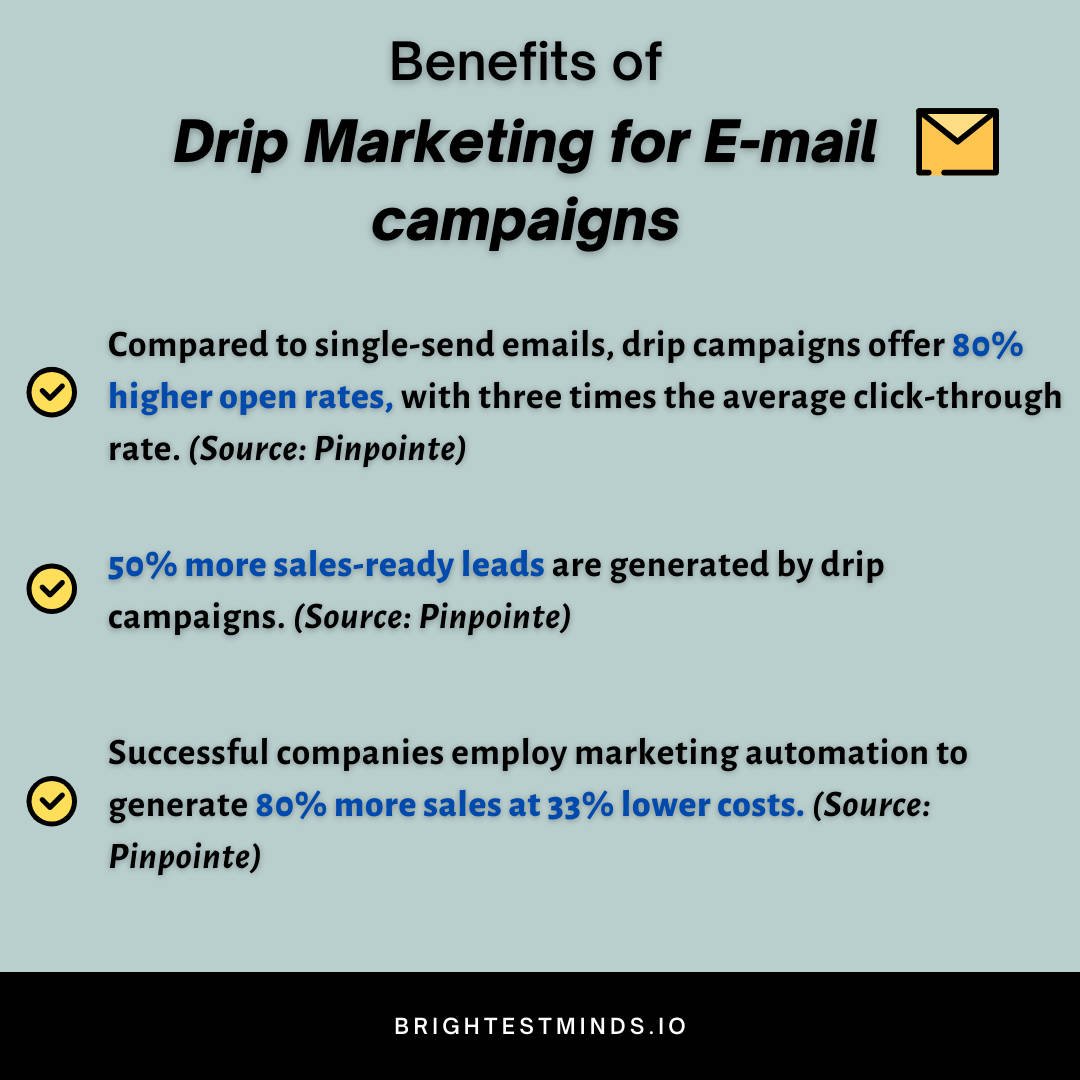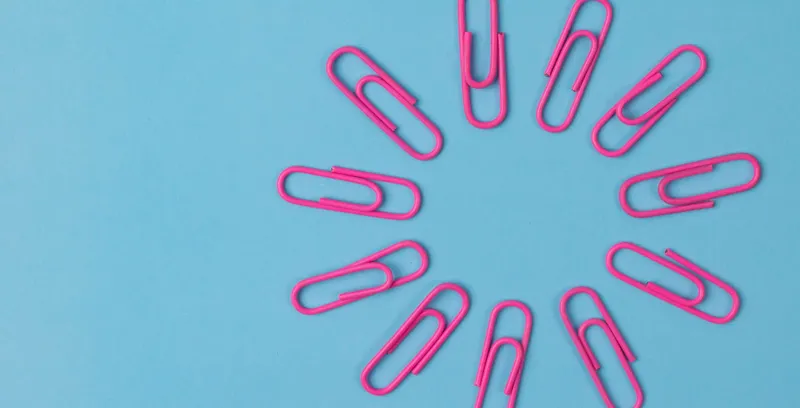It's hard to know where to start when writing a cold email campaign. You want your email to stand out, but you also don't want to sound like every other marketer.
Most people send the same tired, cold email templates and wonder why they don't get any replies.
In this article, we'll show you how to write an effective cold email campaign that will help you stand out from the competition and get more replies.
Based on hours of research from successful lead generation campaigns that convert leads 122% better than Facebook or Adwords, this guide will teach you to write emails that get noticed and generate results.
You'll learn about the importance of drip campaigns, personalization, and the right words to use in your email copy.
How COVID changed emailing
COVID changed the world in many aspects and especially in how people are experiencing their emails.
The average sales team spent 80% of the day on the phone and 20% on email before COVID.
You would only send emails as an afterthought if someone did not pick up the phone.
Clarity analyzed some data showing that 16% more emails were sent on average after the lockdown started, with only 8% fewer responses.
This means prospects are getting bombarded with more messages.
So, if your message is the same as your competitor's, don't be surprised to get ignored suddenly.
An individual can easily see which ones you took the time to personalize versus those you just sent to a thousand people at once.
Cold emailing methods have evolved (even since 2020)
Research from Lavender shows what worked for a cold email in 2020 isn't working today.
For example, writing an email that takes 45 seconds to read was considered best practice in many circles.
We've seen this trend decline in the last two years. Today, the best emails:
- Could be read in 15-20 seconds
- Contain only about 50 words.
In 50 words, how do you make your point clear?
Generally, people send emails that are a couple of hundred words long.
Cold email writing skills in 2022
Even if one hasn't attended college, individuals should be able to write an email to CEOs who are considered prospects.
People with formal writing training were likely taught to write for their teachers and professors. Such writing is usually long and formal.
It becomes a habit to have a word limit that you need to meet for these reasons.
So, you intentionally teach yourself to say things longer than you should by adding filler words as part of your word limit.
And what works in modern-day selling is not any of that. It's not formal, it's not complicated, and it's not long.
In fact, people spend approximately 11 to 15 seconds on your email, so you need to make your point very clear and very simple.

As people scan your email quickly, they won't give you their full attention.
So try to stick to:
- Using simple language as it's easier to scan (easier to get to the point)
- A different writing style from what you've usually encountered in college.
Attention spans are getting shorter and shorter
People's attention spans are decreasing even more as individuals use many social media platforms (TikTok, Instagram, etc.).
In fact, B2B cold email best practices have increasingly embraced the short Instagram caption type of messaging in their copy.
Though short messages have been successful in social marketing, we don't see them often being used in newsletters or email marketing.
Email marketing is moving slowly in that direction, though.
Founder of My Learning Hub Victor explains in this video how he could save 10 times more money than Google ads by using Brightest Minds' shorter cold emailing strategies.
Think of approaching cold emails as you would notice an advertisement on a billboard. There is only a split second to grab someone's attention on the interstate, so they are short.
That's what's happening in email marketing, and the shift has already begun.
Be willing to “dumb-down” your email copy
Many people are reluctant to adopt effective practices because of fear of pushback.
A significant concern is that people believe it's not polite to email at a 7th-grade level because they think it's essential to use buzzwords and jargon to sound professional.
However, most don't realize they sound just like everyone else selling that prospect a similar solution.
Even if you want to sell a product that sounds sophisticated or scientific, consider this case study from a client of Lavender.
A user was selling to high-level enterprises and believed he would have to sound intelligent (that is, college-educated) to email the decision-makers such as the CTO.
Once he reduced his cadences to a 4th-grade level, he almost immediately brought in half a million dollars!
Active voice is perfect for email copy
Today's people have shorter attention spans. So, how do you write for them?
You use what's called "active voice."
The majority of people write in passive voice, which can be more challenging for people to understand and make your email seem less important.

Writing in the active voice makes your email easier to read and more engaging.
It sounds like you're talking directly to your reader.
For example:
"Over 5,000 customers have been helped by our solution."
vs
"We have helped over 5,000 customers."
Both sentences convey the same meaning. But one is shorter and to the point, while the other is longer and more complicated.
By using an active voice for your cold email lead generation campaigns, you will be more likely to get your prospect's attention and get a response.
The tone you use when cold emailing is crucial
It's hard to write the best B2B cold emails and even tougher to stand out. Most people dread getting cold emails as they can seem impersonal.
Essentially, whenever you are writing a cold email, you should always write in a more empathetic tone.
This shows to the recipient that you are:
- Polite and respectful, minding the language you are using.
- You are prepared to build a connection with the person you are contacting.
For instance, this cold emailing example below:
a) I saw you're hiring. (Blog) states that X% of new sales hires fail to hit quota. Despite XYZ as an organization growing overall, the engineering team has been losing members in the past year. Engineering recruits cost around $40k per head, and most heads of engineering are behind on hiring, which is why retention is important.
There's a problem with this kind of language because you're just a random person in a buyer's inbox.
Your prospect is probably thinking. "Who is this individual, and why are they discussing my business without context?".
According to Lavender's data, a softer or "unsure" tone would be a better approach. Here are some examples:
b) I noticed you might be hiring. I could be wrong, but are you beginning to think about ramping up? Perhaps I'm mistaken, but it looks like your org has been increasing headcount overall, but the engineering team has been losing members.
This may not apply to you, but hiring an engineer typically costs about $40K per head, and it's common for most heads of engineering to be behind in the hiring process.
So ensure to take care of the grammatical aspects of your email copy (which is also important) and be aware of how you sound in the email.
In addition to crafting the right tone in your cold emails, including an email signature is essential. This helps recipients to easily identify who you are and find additional information if needed and present you as a legitimate and credible sender, increasing the chances of your email being taken seriously and receiving a response.
When using emojis, consider the recipient
One recent study found that including emojis in your cold emailing for sales strategy can significantly increase your response rate.
However, this strategy might not suit all audiences, as using emojis with senior executives or other experienced decision-makers could land you on their wrong side.
Using emojis in your cold email lead generation strategy could be a brilliant idea if your target audience consists primarily of younger individuals – such as Gen Z prospects.
Regardless of the audience, when using emojis in emails, research your audience's decision-makers and ICPs before using them.
Emojis have the following benefits for your email campaigns:
- Using emojis instead of words makes your sentences shorter when using a mobile device.
- Including emojis in your email copy is another way to make your email more engaging and fun to read.
- Adding emojis to your email can help break up the text and make it more visually appealing, which helps keep readers engaged.
CTA's: Call to Action
Always include a call-to-action in your email copy (CTA).
Your goal with a CTA is to encourage your prospects to click on it after reading your email and:
- Go to your website
- Or buy your product
- Or subscribe
A call to action must not only be clear and brief, but it must also be visible enough – so the reader doesn't miss it.
Also, make sure the CTA in your email corresponds to the message you are sending.
For instance, if you are selling a new product in your email, your call to action should relate to the product naturally (but subtly).
Consider the call to action in this example:
Hi ,
It would be great if you could tell me where you stand before we part ways as friends who haven't yet met – by responding to one of the following:
- We're in a contract, but you can get in touch in a few months.
- We have a lot on our plate. Contact me in ___ months.
- Our current strategy is working perfectly.
In the event I don't hear from you, no worries. Please keep in mind for future campaigns.
Regards,
Reading the email was enjoyable because:
- The email was concise
- CTA was in bullet points, making it easier to read
- The tone was empathetic throughout
Great calls to action are always specific, clear, and relevant to the email content.
Drip marketing: Why is it important for cold emailing?
Drip marketing is a way to break down marketing communications (cold emails, phone calls, social media posts, brochures, printed leaflets, etc.) over a more extended period.
Different people call it by different names —
- Marketing automation
- Drip marketing
- Automated email campaign
- Lifecycle emails

According to Nethunt, open rates for email drip campaigns are roughly 80% higher than single send emails, with 3 times the average click-through rates.
And as a direct consequence, nurtured leads tend to purchase 43% more than non-nurtured leads.
Drip marketing's advantages
Drip marketing for your business has several advantages:
- Prospects will be less annoyed: Cold calling and cold emailing can be effective, but they require interrupting your prospects' lives. As a result, they are likely to irritate and negatively influence your prospects.
Triggered emails prevent this because the prospect (through research and planning) will receive the email at the right time. - It improves engagement: Studies show that emails sent in response to user actions are more likely to be opened than mass-sending campaigns.
By sending a well-crafted personalized email, you can promote your business and relevant products and get a response from your customers. - Brand awareness increases: If you appear regularly in your leads' inboxes, you remind them about you and remain in their minds longer.
- Leads flow naturally down the funnel: Drip marketing saves time and money for your business as drip marketing enhances productivity.
In addition, automating your marketing allows you to drive leads towards conversion with less employee involvement. - Upselling and cross-selling are possible: You can achieve repeat sales by extending your drip campaign beyond conversions. The result is more sales!
Drip marketing is a highly relevant and effective strategy for cold email campaigns.
In addition, automated drip campaigns can save businesses time and money while still yielding high-quality results.
When planning a cold email campaign, consider how you can use drip marketing to your advantage.
When executed correctly, drip marketing is a powerful tool that can yield great results for your cold email campaigns.
Conclusion
In order to maximize response rates and sales from an email campaign, you need to connect with your recipients personally.
An SDR must look at what matters to the client and why they might find your product or service valuable.
It also means putting together a pitch tailored to the client's needs instead of sending out a generic email.
In case you are uncertain about what to do, we would be happy to share more information with you on improving your cold email sales campaign.




